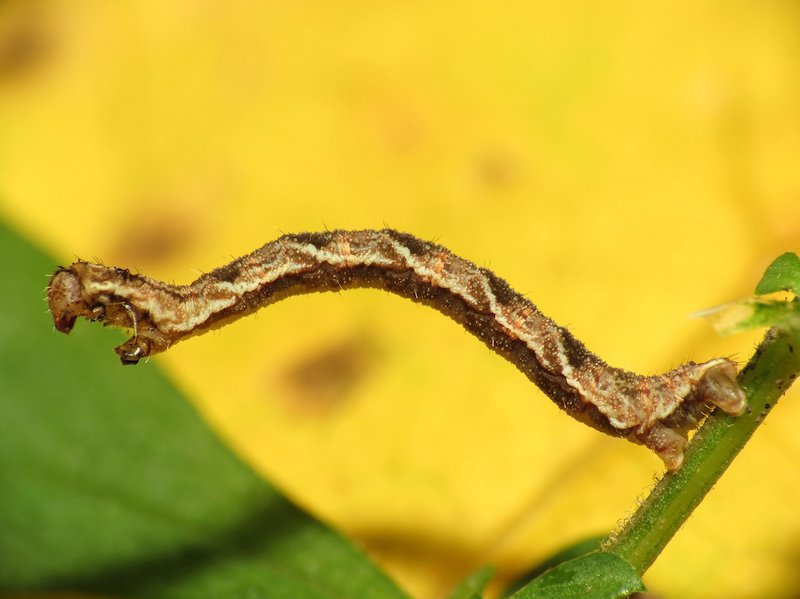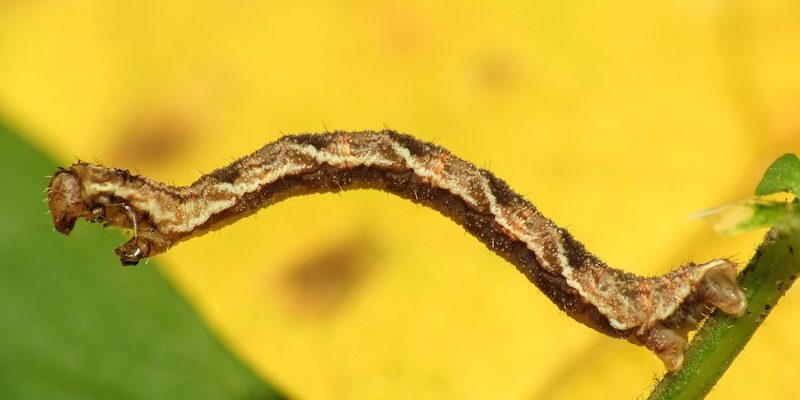
So, what do these wriggly worms do when the weather shifts? Think of it this way: just like we might grab a sweater on a chilly day or seek shade when it’s hot, inchworms respond to temperature changes with their own unique behaviors and adaptations. Understanding how they react not only gives us insight into their world but also helps us see how interconnected all life is, especially with changes in our climate. Let’s dive in and explore the ways inchworms handle temperature fluctuations!
What Are Inchworms?
Before we jump into how inchworms react to temperature, let’s take a step back and look at what these creatures really are. Inchworms, also known as **loopers**, belong to the moth caterpillar family, notably the Geometridae family. They’re called inchworms because of their distinctive way of moving—they “inch” their bodies forward in a looping motion. Imagine a tiny little gymnast practicing their moves on a balance beam!
Typically, inchworms can be brown, green, or even a mix of colors, which helps them blend into their surroundings. This camouflage is incredibly useful not just for hiding from birds but also for regulating their temperature. When it gets too cold or hot, their color can help them either absorb warmth from the sun or reflect it away. Isn’t that cool?
Inchworms go through several life stages, including egg, larva (the inchworm stage), pupa, and adult moth. Each stage has its own needs, and temperature plays a big part in their development. When the weather’s just right, they can grow, feed, and eventually transform into moths.
How Temperature Affects Inchworm Behavior
Temperature influences inchworms in many ways, impacting everything from their **metabolism** to their movement patterns. When it gets hot, these little guys tend to become more active. It’s almost like watching kids come alive at recess! They roam around searching for food, which is primarily leaves. However, as the temperature rises too high, they might seek shade to avoid overheating.
On the flip side, when temperatures drop, inchworms slow down significantly. It’s not that they’ve lost their energy; they’re just conserving it. They might hide under the bark of trees or under leaves, curling up to conserve warmth. You might think of them as tiny snails retreating into their shells when it’s cold. This behavior ensures they don’t waste energy and can survive until conditions improve.
Essentially, temperature acts as a cue for inchworms, guiding their activities. They’ve evolved to not only recognize these changes but to use them to their advantage. This adaptability is crucial for their survival, especially in fluctuating climates.
Inchworms and Their Thermoregulation Strategies
Thermoregulation is a fancy word that simply means how an organism maintains its body temperature. Inchworms have some interesting strategies to cope with temperature variations. For starters, their **color** plays a significant role. Darker inchworms can absorb more heat on cooler days, while lighter ones can reflect sunlight to stay cool during hot spells.
Another key strategy is their behavior. As temperatures drop, inchworms often “hibernate” in a way. They might enter a state of dormancy, slowing their body functions to conserve energy. During this time, they utilize shelter, hiding under leaves or inside tree bark to insulate themselves against the cold.
This seasonal adaptability is crucial, especially as temperatures fluctuate due to climate change. Inchworms that can manage their body temperature effectively stand a better chance of survival, while those that can’t may struggle to find food or reproduce.
The Impact of Climate Change on Inchworms
Here’s the thing: climate change doesn’t just affect us; it has far-reaching impacts on all living creatures, including inchworms. As average temperatures rise and weather patterns become more erratic, inchworms are faced with new challenges.
For instance, if spring arrives earlier than usual, inchworms could emerge from their eggs too soon, only to find that the leaves they depend on for food haven’t yet sprouted. Imagine going to your favorite café only to find it’s closed for renovation. That’s what it would feel like for inchworms caught off guard by temperature changes.
Additionally, warmer winters can disrupt their hibernation patterns. If they don’t get enough cold days, it could lead to a mismatch in their life cycle and food availability. This imbalance can have ripple effects throughout the ecosystem, affecting not only inchworms but also the animals that prey on them and the plants they feed on.
The Role of Inchworms in Ecosystems
Now, you might wonder why inchworms matter in the grand scheme of things. They aren’t just cute little creatures; they play a vital role in their ecosystems. As herbivores, inchworms are part of the food web. They serve as a food source for various animals, including birds, mammals, and even other insects.
By munching on leaves, inchworms help control plant growth and nibble on weak or overgrown foliage. This natural form of pruning allows healthier plants to thrive, contributing to the overall health of their habitat. So, when you see an inchworm, remember they’re not just hanging out; they’re helping maintain balance.
As temperatures continue to shift, understanding how inchworms and other organisms adapt can guide conservation efforts. Protecting their habitats and ensuring a stable environment will help maintain the intricate connections within ecosystems.
So, the next time you spot an inchworm inching along a branch, take a moment to appreciate what’s going on beneath the surface. These little creatures are incredibly resilient, adapting to temperature changes in remarkable ways. From altering their behaviors to using their surroundings for warmth or cooling, inchworms are a wonderful reminder of nature’s ingenuity.
As we continue to learn about climate change, it’s essential to remember the smaller players like inchworms. They may be tiny, but their ability to adapt is vast—keeping ecosystems running smoothly and reminding us of the delicate balance we all share with our planet. Whether you’re an insect enthusiast or just curious about nature, inchworms offer a fascinating glimpse into the complexities of life.

